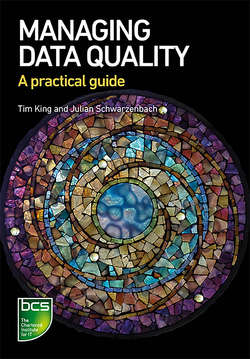Читать книгу Managing Data Quality - Tim King - Страница 24
ОглавлениеManaging Data Quality
8
There are slightly different life cycles for general data and for documents, where much of the meaning is carried by unstructured content (i.e. free text and images). Other types of data will have variations on these two life cycles.
The typical life cycle for general data consists of 11 stages, shown in Figure 1.2.
Figure 1.2 A typical life cycle for general data
The stages in this life cycle are as follows.
Specify: The activity of ensuring that data requirements are detailed in order to make certain that data providers understand what is required. For some data, the organisation is not able to impose a specification on external providers but, by identifying formal requirements, the organisation would at least be able to identify issues upon receipt of the data.
Signal/data acquisition: Structured data can arise from signals in physical assets (e.g. a temperature reading being recorded every 10 seconds) or can be generated by operational control systems.
Purchase: Specialist companies can, for example, provide data on population demographics, derive industry-wide market analysis or model future projected demand for a service.
Data entry: Much data will arise from some form of data entry, either specifically as a data population activity (perhaps manually entered) or arising from a business activity as part of the process being undertaken.
Store: Once you have acquired data, they will need to be stored and kept ready for immediate use.
Utilise/exploit: The activity of using data to support business processes, decision making or analysis is where the benefits arising from the data can be delivered for the organisation. This is, however, also the point where poor data quality management can compromise the potential benefits that could be delivered.
Assess quality: A part of data exploitation should be an assessment of the quality of the data. When undertaking data analysis, for example, it may become apparent
